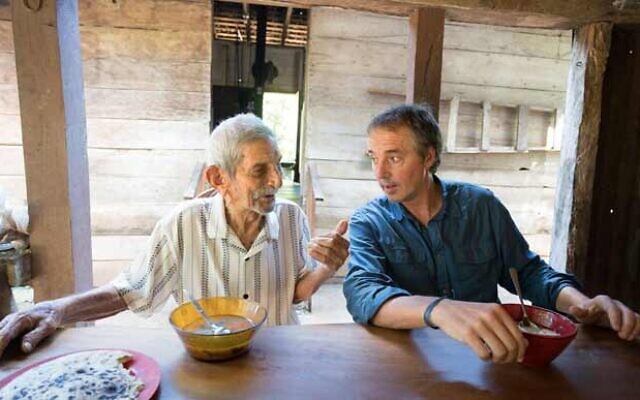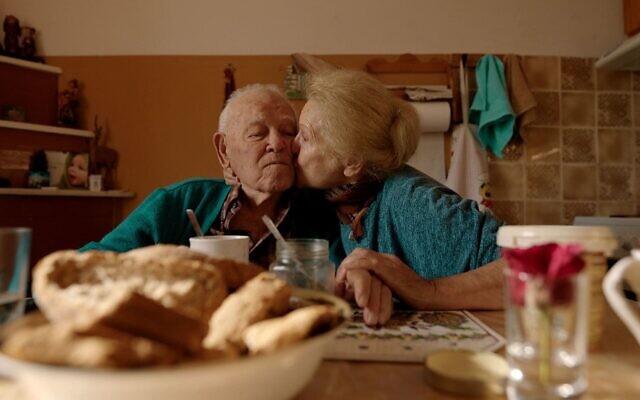Practice ‘Blue Zone’ Style to Live to 100
New Netflix docuseries explores the habits of successful seniors around the globe.
After 37 years with the Atlanta Journal-Constitution and now with the AJT, , Jaffe’s focus is lifestyle, art, dining, fashion, and community events with emphasis on Jewish movers and shakers.

The old Yiddish proverb, “May you live to 120,” is not that far from reality. Ask centenarian Henry Kissinger, who is well on the media circuit in his gravelly voice pontificating on world events, or the 103-year-old woman in Nicoya Peninsula, Costa Rica, who still chops her own wood.
Riding the gray wave, Netflix’s new four-part docuseries, “Live to 100: Secrets of the Blue Zones,” embarks on a worldwide tour of five communities whose residents have lifestyle choices that mimic gulping from the “fountain of youth.”
The “Blue Zone” theory is not a new one, yet the way this series is organized congeals and educates. Netflix moderator/author Dan Buettner, gliding on his bicycle, has grasped the attention of longevity seekers with predictable choices like diet and exercise along with some surprises and oddities.
One may never look at a blue sweet potato in the same way. Buettner set out 20 years ago with a team from “National Geographic” to seek the commonalities and distill wisdom as a “how to” manual to improve life quality and quantity. Buettner tours Okinawa, Sardinia, Costa Rica, Greece, and the only U.S. Blue Zone, Loma Linda, Calif.

He concludes that it’s not all about winning the genetic lottery. He argues that “it’s 20 percent genes, 10 percent personal choices, 10 percent health care system, and the remaining 60 percent is environment.”
Some of the latter are eschewing the car to walk or bike, proximity to plant-based foods, not overeating (especially non-processed foods) and sharing meals with family and friends. Some things are in contradiction. In Loma Linda, alcohol is prohibited, yet in Greece and Sardinia, it is part of everyday meals.
Loma Linda was especially interesting as it incorporates many of the best points in an insular way: faith based Seventh Day Adventist (which, like Judaism, has Saturday Sabbath), vegetarian diet based, good weather for activities, built in community of friends, a huge medical center.
Less common references are spending time on the floor (getting up and down to maintain balance), playing pickleball, and eating dairy products from goats and sheep (not cows). One thing many of these older folks do not have is good dental work — toothlessly playing the screechy viola and rolling pasta at 102, smiling along the way. What they do have in common is family care and even reverence — as opposed to the more common American way of checking into a $10,000-plus a month senior care facility, which may not be all that bad considering the food and camaraderie element may co-exist.

Then there’s the contrasting female to male variable. A New England Centenarian Study showed that of the approximately 90,000 centenarians, or .027 percent of overall population, in the U.S. today, 85 percent are female, and of the super centenarians, 110 or older, 90 percent are female.
In the U.S., the average life expectancy recently dropped to 76, the lowest it has been in the past two decades and may have some relationship to COVID. In some villages, there are simple variables: the men have low-stress jobs like watching the sheep and laying about, some of the poorer villages live longer because they are not close to town and have to walk uphill to get home.
Speaking of females, local treasure Nanette Wenger, 93, Emory legend and pioneer cardiologist, added these words of wisdom, “Cherish the added years given you for the opportunity to give back and mentor and sponsor others. Enjoy each day and value the camaraderie of family and friends. Make the world a better place by your thoughts and deeds.”
A black belt marital arts octogenarian physician also told the AJT, “Think about how lazy we have become. In my previous car, I had to open and close the trunk with some vigor, now we push a button.”
Nuggets from Blue Zone lifestyles:
• Stress management: napping, praying, happy hour with friends
• 80 percent rule: avoid overeating; stop when 80 percent full; Hara Hachi Bu in Japanese
• Plant-centric meals also shown to lower risk of depression and cognitive decline
• Social connectedness with friends who have healthy habits
• Spirituality as little as once a month has health benefits
• Family first: contribute to household responsibilities and childcare; live near adult children who care
• Stay open minded and continue to learn
• Don’t leave any years on the table and mash those blue yams



comments